Something that the Lamu Conservation Trust is hoping to do on Amu is to begin work documenting the knowledge of local tribes like the Boni
Something that the Lamu Conservation Trust is hoping to do on Amu is to begin work documenting the knowledge of local tribes like the Boni. Inspiration comes from the ranch's tracker, Ali, whom I have met on several occasions. Nicknamed GPS for his uncanny ability to navigate in the bush, he has lived and learned the ways of this wilderness his entire life. Finding food and medicine in the wild, and accomplishing basic survival tasks come second-nature.
I thought it would be interesting to learn a bit about the plants on Amu ranch. Specifically, which ones are edible and which ones can be used for medicinal purposes. Originally thinking that we would be driving around the ranch in search of a small handful of specimens, I was surprised when we set out on foot from the main camp. I was even more surprised when an hour later my list of plants had reached three pages. Every ten paces or so, Ali would stop and point out another plant. Mostly medicinal, but many edible. He knows the names of every plant, how they are prepared, and what uses they have. He had tinctures to reduce blood pressure, facilitate labour, and treat diseases such as gonorrhoea, conjunctivitis, malaria, and bilharzia (to name just a few). Some of the cures did have superstitious overtones such as a cure for erectile dysfunction which involved boiling tree roots along with a set of goat testicles. On the other hand -- while explaining the preparation for a liver disease treatment, he noted that liver disease is diagnosed by a yellowing of the eyes. I should probably be ashamed for assuming that a Boni tribesman wouldn't know what jaundice is.
Most of the edible plants consist of fruits and berries, of which only a few were in season. Despite this, Ali could still point out which trees produced what kind of fruit,what the fruit looks like and how it tastes. Some are used to make juice and alcohol, but most are better consumed straight off the tree. Although I regretted it later, I decided to test everything that was handed to me.
This fruit, known in Swahili as mabungo has a hard, yellow skin and large seeds which are coated in a sour but tasty pulp. It is only found in a few countries but is popular along the coast of Kenya and Tanzania, especially Zanzibar.

Unlike commonly cultivated berries which are selected and bred for sweetness, the wild varieties on Amu are slightly woodier. These berries, named Mlapaa in Swahili, aren't especially sweet but did a fair job of cleansing my palate after sampling several leaves and barks reminiscent of the malaria medicine I was forced to take as a child -- bitter and disgusting.
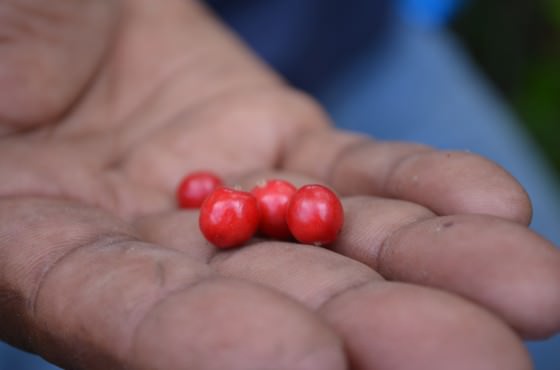
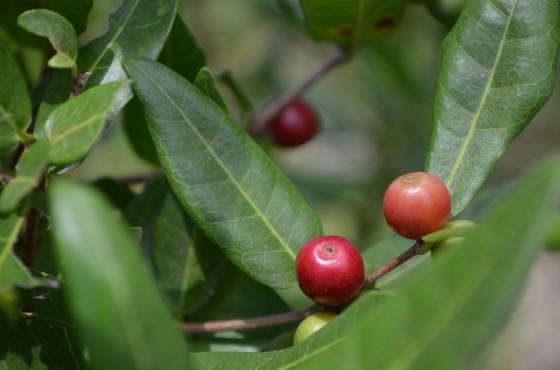
One of only two plants that Ali did not locate on our walk but grows on the northern end of the ranch is Warburgia ugandensis or the Pepper-bark tree. The Boni use it to cure the common cold and as a spice in their cooking. It is spicy but rather bitter, with a strong after taste. In traditional African medicine it treats a range of complaints from aches and pains to fever and constipation (contradictorily, it is also used to prevent diarrhea).
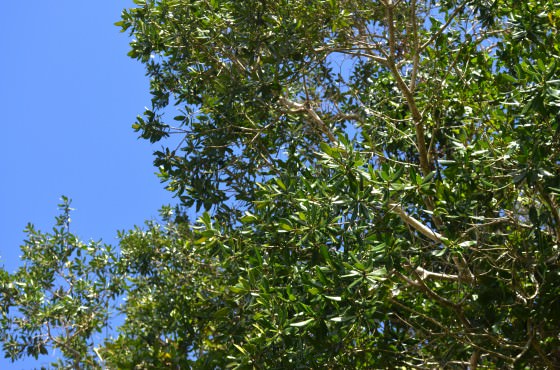
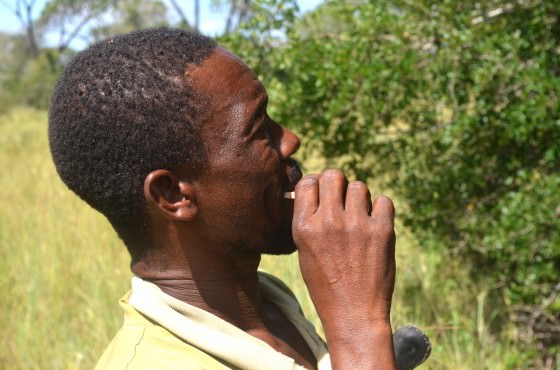
Another favourite food source for the Boni is honey. With a beehive very close to the main camp at Amu, Ali and a helper set off to collect a bowl-full. They will often harvest honey in the wild from natural hives, but like the Wakamba, they also hang man-made hives in tress.
As with conventional beekeeping, the swarm is subdued using smoke but since they don't have modern smoke blowers they start a small fire in a clump of grass or doum palm frond which is held below the hive. Unfortunately, careless honey hunters often start out-of-control bush fires when their smokers are left unattended.
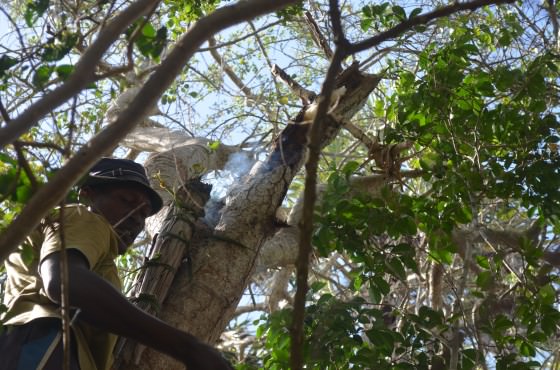
Once the bees become docile, he is able to begin extracting the comb.

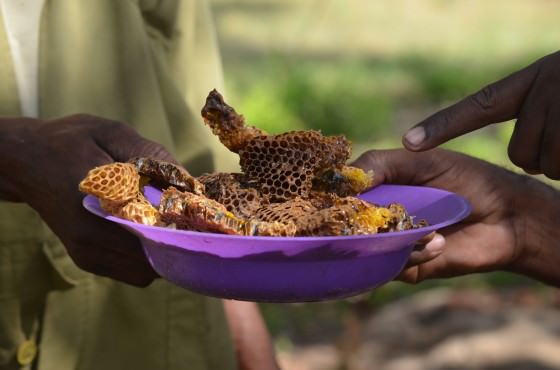
Aside from collecting honey, I was awarded a couple other demonstrations: preparing a cure for gonorrhoea and other sexually transmitted diseases, and a Boni fire-starting technique. Ali's father apparently never used a match in his entire life and always carried a fire-starting kit on his waist for use in the bush.
Gonorhoea medicine is created using the bark from a bush which Ali called mlataya. The bark is scraped off and added to water and then stirred using a homemade whisk. The whisk is made by splicing two small sticks in a cross to the end of the stirring handle. This allows him to mix the concoction vigorously enough to create a heavy foam which is then consumed three times a day for three days, allegedly curing several venereal diseases.

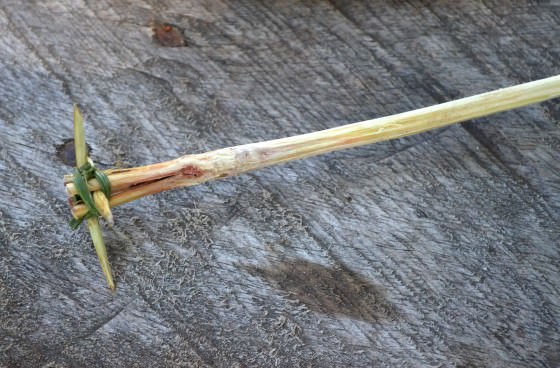

I did sample the concoction, which tasted of very little. Of course I don't know if it really works, but I imagine it does, as a lot of traditional medicine has been used successfully for hundreds of years. Reflecting on a day in the bush with Ali, I do feel some regret that our modern society has devalued self-reliance. If civilisation collapsed tomorrow, much of the world would die of starvation, but I reckon the Boni would be in pretty decent shape.